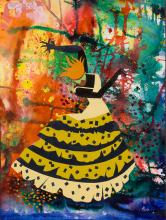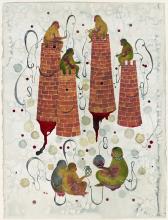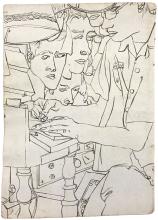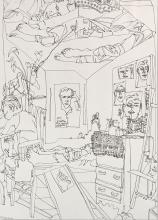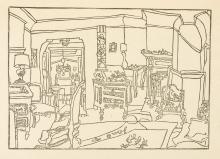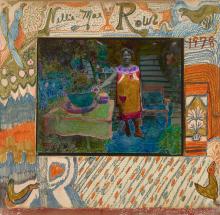Miriam Schapiro's Rondo: Let's Dance
Submitted by Rachel Federman on Tue, 03/22/2022 - 6:18pmDuring the 2021 winter holiday season, the Morgan received as a gift Rondo, a group of twenty-four collages by feminist-art pioneer Miriam Schapiro (American, born in Canada, 1923–2015). The donors, Peter and Kirsten Bedford, commissioned them in 1988 for a series of clothbound artists’ books published under their San Francisco imprint, Bedford Arts.

